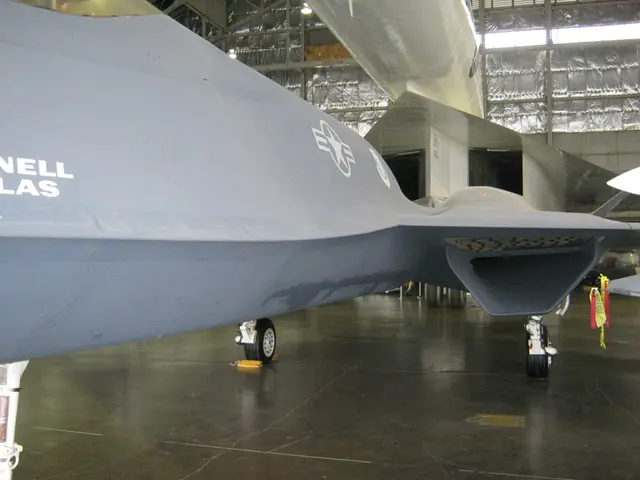Advanced Optical Filters in Military and Aeronautics Innovations
In the dynamic world of military, defense, and aerospace technology, Cevians' vertically integrated operations play a crucial role in advancing system performance. With a focus on polymer and glass science, NVIS LED production, thin film coating laboratories, machining, fabrication, and integration of application-specific designs and configurations, Cevians delivers cutting-edge solutions tailored to the rigorous demands of these sectors.
One such solution is the use of optical filters. These specialized components are designed to precisely control the transmission, reflection, or absorption of specific wavelengths of light, thereby improving image quality, sensor accuracy, and system reliability under harsh conditions.
Optical filters work in several key ways to enhance system performance. For instance, selective wavelength transmission filters, such as IR-cut, UV-cut, and bandpass filters, allow only desired spectral bands, like short-wave or long-wave infrared, to pass. This improves the quality and contrast of thermal imaging, night vision, and surveillance systems critical for tactical and aerospace missions.
High-purity optical glasses and coatings in these filters reduce unwanted reflections, glare, and scattering, enhancing low-light performance and sensor precision for vision systems used in dismounted forces, aircraft sensors, and head-up displays.
Laser protection and light management are other significant benefits of optical filters. Specialized filter packages protect sensitive laser components in augmented reality (AR) systems and laser warning sensors, maintaining high brightness and resolution in compact, rugged designs.
Optical filters are engineered to endure extreme temperatures, mechanical shock, dust, moisture, abrasion, and humidity typical in military and aerospace contexts. This ensures consistent optical performance in diverse and harsh environments, a crucial factor in maintaining system reliability.
Some filters also reduce optical and IR signature reflectivity, enhancing stealth capabilities, and provide electromagnetic interference (EMI) shielding without compromising optical clarity. This is critical for sensitive optical and electronic systems.
In addition, optical filters are integrated with sensors and fiber optics in various applications, contributing to compact, lightweight, and rugged field-deployable devices.
Cevians offers a wide range of optical products for different applications, including EMI/RFI filters, transparent heaters, NVIS filters, display cover glass, and precision optics. The company's high-durability materials and coatings make their optical filters the top choice for mission-critical operations where precision and reliability are essential.
In the aerospace sector, optical filters are used for satellite imaging to enhance imagery, avionics to reduce reflections, electromagnetic interference, and provide Night Vision Imaging System (NVIS) compatibility. They are also used in surveillance to enhance image quality in degraded and contested environments, such as night operations, inclement weather, or high EMI/RFI noise.
In conclusion, optical filters are highly specialized components that play a vital role in military, defense, and aerospace applications. They improve visibility, detection, and threat identification while being robust enough to maintain performance under the severe environmental and operational stresses encountered in these sectors.
- In the aerospace industry, optical filters are utilized to enhance satellite imaging, offering improved imagery, and reducing electromagnetic interference, ensuring Night Vision Imaging System (NVIS) compatibility.
- The robustness of optical filters enables them to withstand extreme temperatures, mechanical shock, dust, moisture, abrasion, and humidity typical in military and aerospace contexts, thus ensuring consistent optical performance in diverse and harsh environments.
- Optical filters are integrated with sensors and fiber optics in various applications, contributing to compact, lightweight, and rugged field-deployable devices in both the military and aerospace sectors, where precision and reliability are paramount.








